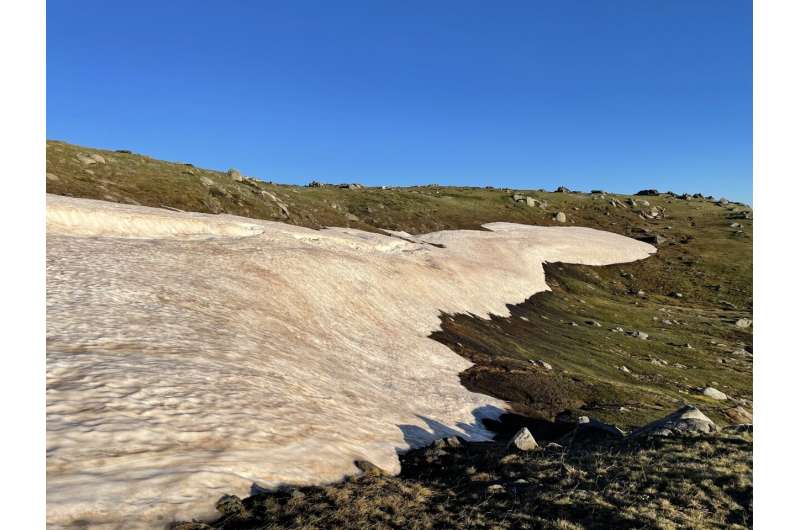This article has been reviewed according to Science X's editorial process and policies. Editors have highlighted the following attributes while ensuring the content's credibility:
fact-checked
peer-reviewed publication
trusted source
proofread
Lower snowfalls threatening rare High Country snowpatch ecosystem

A new study, "Early-melting snowpatch plant communities are transitioning into novel states," published in Scientific Reports, has found that lower snowfalls and earlier meltout has seen the ecosystem begin to transition into a new community "with an uncertain future."
Lead researcher Dr. John Morgan, Associate Professor Environment at La Trobe and a member of the Research Center for Applied Alpine Ecology, likened the findings to the impact of climate change on the Great Barrier Reef.
"What we are seeing is entirely expected; snowpatches are a bit like the coral reefs—one of the first places to see major change in structure and composition," Dr. Morgan said.
"We are seeing evidence for change that might ultimately lead to ecosystem collapse—so we need to better understand what can be done to save snowpatch plant communities."
Snowpatch ecosystems occur where snow persists the longest each year, sometimes until Australia Day in Victoria, and even longer in the Kosciuszko National Park.
Dr. Morgan and research assistant Mr. Zac Walker, from the Research Center for Applied Alpine Ecology, used a revisitation study to quantify early-melting snowpatch floristic and functional diversity change in southern Australia.
They documented any changes to shrub size distribution over time to detect encroachment into snow patches—a key prediction of climate change.
They found snowpatch vegetation had declined in area, the composition of species had changed, and shrub and tussock grass cover has increased, although changes in "functional trait diversity" were less clear.
"Many early-melting snowpatches are transitioning to a novel state with changed composition and taller vegetation structure, but there is little evidence for species loss having occurred," the researchers found.
"Given enough time, however, the long-term loss of species is likely (i.e., biotic homogenization) if taller shrubs out-compete short-statured snowpatch species.
"Our results provide evidence that this alpine ecosystem is forming a novel community with an uncertain future."
Dr. Morgan said the research was important given lower snowfalls are becoming more frequent in the Australian Alps, and poorer snow seasons mean "longer snow-free seasons that favor plant species that are typically limited by the snow."
More information: John Morgan et al, Early-melting snowpatch plant communities are transitioning into novel states, Scientific Reports (2023). DOI: 10.1038/s41598-023-42808-5
Journal information: Scientific Reports
Provided by La Trobe University


















